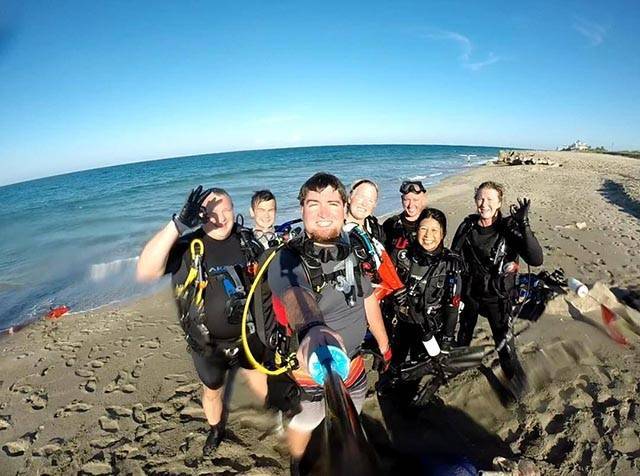
June marks the start of the core diving season for South Florida and for some, their first dives of the year. Many Florida natives consider themselves ‘fair weather’ divers and will only dive during the height of the summer when water temperatures are up and seas are down. Luckily this time of year won’t disappoint! Everyone loves being offshore when boat wakes are the only waves to be found, making June the best time to experience what Florida diving has to offer.
Calm seas are trademark during the summertime diving season and provided tropical activity remains low, divers can expect conditions below the surface to be spectacular. Without large ground swells to churn the water column, visibility returns to areas typically plagued with murky conditions. Locations like the Donaldson Reef area out of Stuart or the 90-foot ledge in Fort Pierce are world class when the water is clear. Sawfish, whale sharks, 8-foot-plus rays have been reported in years past. Beach diving is also excellent this time of year too. Bryn Mawr Reef, Fredrick Douglas Beach and the House of Refuge’s Valentine wreck are nice places to explore when seas are calm.
Unfortunately, June also marks the beginning of the rainy season in South Florida and the potential for strong afternoon thunderstorms should be taken into consideration. Captains should review how to handle white-out conditions with divers, should they surface in a rain storm. Basic signaling devices such as safety sausages and whistles should be considered standard equipment while some divers opt to take it a step further and pack submersible VHF radios for direct communication with the boat while on the surface in the event of separation.
Weather watchers may notice light west winds develop this time of year too, especially in the afternoon. These offshore breezes influence obvious changes like thunderstorm activity and sea conditions but may also have a subtle impact on diving too. Believe it or not, South Florida experiences the coldest water temperatures during the hottest part of the year due to coastal up-wellings. As westerly winds blow offshore they can actually push the warm surface waters of the Gulf Stream further away from the coast setting up the potential of cold water from deep offshore to fill from underneath. These thermoclines maybe refreshing on hot days with bottom temperatures in the mid-to-low-70s but stronger events have been reported with temps as low as the 50s being reported in years past. The good news is the water is usually nice and clear with 100-foot top to bottom visibility common.
[easy-social-share]




